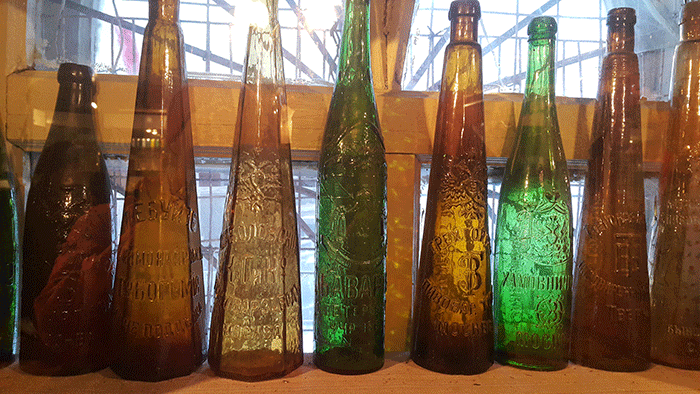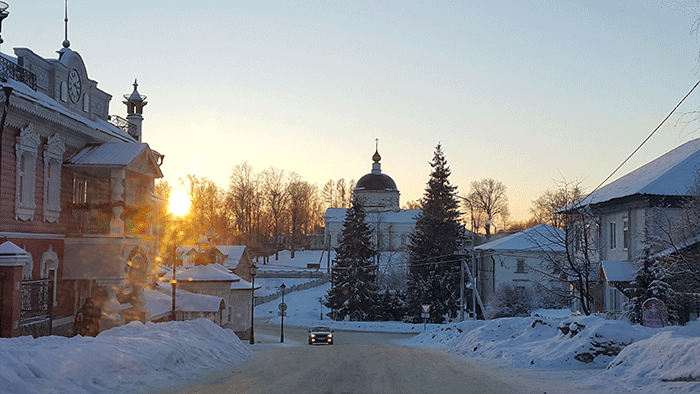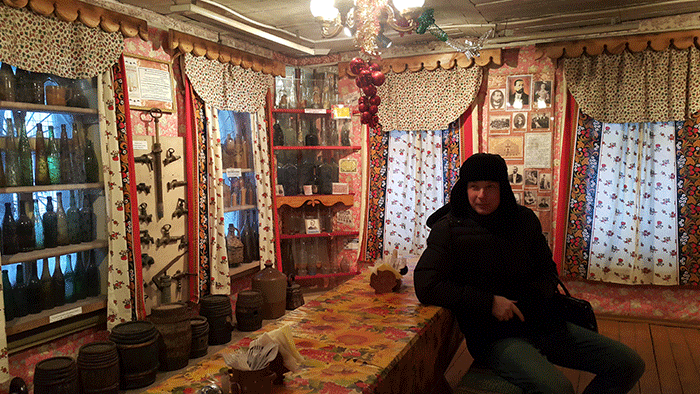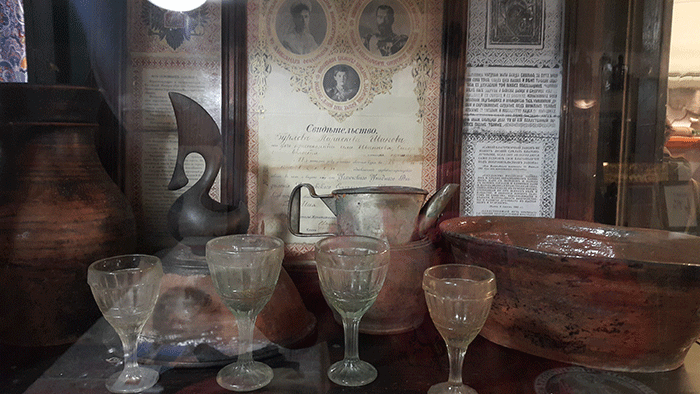The winter season is in full swing, meaning it is time to test the good old Russian ways of keeping warm and happy. And in the towns Myshkin and Uglich, located in the home county of Russian vodka king Petr Smirnov, they sure know how to make strong spirits, and these recipes and technologies go way back, as with so many things in Russia.
Traditions of spirit making in pre-revolutionary Russia were rich and technologies elaborate, with countless variations of alcoholic beverages to savour – ratafias, nastoikas, nalivkas and yerofeich (vodka flavoured with aromatic herbs and spices), to name a few. Each family had their own recipes of vodka-making. In Russian aristocratic homes, these were elaborately made following complex stages of distillation and refinement of grain alcohol and then infusion with herbs, berries and fruit. These were then kept in a special place and slowly relished during the long winter evenings. Here, for instance, is how one of Pushkin’s characters describes one such home recipe: “Now here’s how we make the true Russian Yerofeich: you take eight zolotniks[1] of mint, anise and bigarade, roughly crushed and pour over vodka filtered through birchwood coal; you then store it for three weeks in a warm place in the attic, or behind a chimney in winter. Have a shot of such Yerofeyich after you’re back from the hunting grounds – and heaven is in your heart…”[2]
By far the largest and most influential industrial vodka producer was the Smirnov House set up by world-famous Pyotr Smirnov in the mid-19th century. This successful entrepreneur came from a small village of Myshkin county. This was a good enough reason for me to go check out Myshkin itself, a tiny town some 270 km north of Moscow, so off we went one crispy January day to explore what it had to offer.
We arrived in Myshkin late in the evening. It was very snowy and seriously chilly and the air temperature kept dropping dangerously. By early morning it plunged to -35, and, unsurprisingly, our car didn’t start. There was nothing left to do but head off straight to the Vodka museum, which, luckily, was a short walk from the hotel. It didn’t feel notably warmer in this single-floor wooden house heated by traditional pech’ (Russian stove) but the hostess, Lyubov Gavrilovna, was alone well worth the visit. She was probably one of the most original Russian characters I had ever met. With a straight face she made jokes that made us roll with laughter. She pushed us into playing a game she herself invented, a kind of a prizes-for-all lottery where each guest, for a humble contribution of 50 roubles, would draw a slip and get to hear a hilarious toast while relishing a stopka (shot) of home-made vodka and a delicious zakuska (a kind of vodka snack, in this case pickled cucumbers). And trust me, the hostess had a countless number of toasts and jokes up her sleeve. After three or four divine stopkas I reached a heavenly place and Myshkin now seemed the best town in the world.
Besides offering an out-of-this-world drinking experience, Lyubov Gavrilovna enlightened us on the true glory of Pyotr Smirnov and his world-famous enterprise. Indeed, this was a genius of entrepreneurship. Smirnov gave jobs to over 12,000 people in the Myshkin county (by comparison, today’s population is half as much and no jobs are in sight!) and was one of the wealthiest people in Russia, if not Europe. He worked out 48 different vodka brands for all tastes and purses, including bitter (pine nut, wormwood, cumin vodkas) and sweet kinds (pineapple, anise, bigarade vodkas). He came up with an entire line of alcoholic drinks for women, who, apparently, were quite important consumers! Typically, these were sweet liqueurs of different kinds much favoured by Russian women; in fact, this was a brilliant sales pitch and a major contribution to the house’s revenues. And, above all, Smirnov was the first exporter of premium class Russian vodka, known in Russia as khlebnoye vino, or ‘bread wine’: pure rye grain alcohol of 40%. While vodka was a mediocre to low quality alcohol drink, bread wine was an expensive, top-quality beverage. This drink is what brought Smirnov his real fame and was exported in ungodly amounts. The company had its representative offices in London, Paris, New York, Tokyo, Shanghai… After the revolution, the rights were purchased by Americans producers. Today it is owned by the British company Diageo.
The museum itself is small and cozy, with lots of curious items to admire. Incidentally, the Myshkin vodka museum (or the Pyotr Smirnov Museum, to be more precise) has a rival in the town of Uglich some 40 km away, as both claim to be Smirnov’s hometowns. The museum in Uglich also boasts a collection of over 1,000 kinds of vodka produced by 96 Russian factories throughout the 20th century; the museum offers vodka tasting (included in the standard ticket price) and don’t miss the gift shop full of locally-made vodkas, liqueurs and infusions!
Where:
- Petr Smirnov Museum, Myshkin, Uglichskaya street 21 (г. Мышкин, ул. Угличская, д. 21) http://www.myshgorod.com/muzsmirnov.html
- Russian Vodka History Museum, Uglich , Uspenskaya ploshad’ 1 (г. Углич, Успенская площадь, д. 1) http://visituglich.com/in…/museums/russian_vodka_museum.html
[1] Zolotnik – a Russian unit of weight equal to 4.26 grams, or a fraction of an ounce
[2] An Amateur Peasant Girl, Alexander Pushkin, 1830




